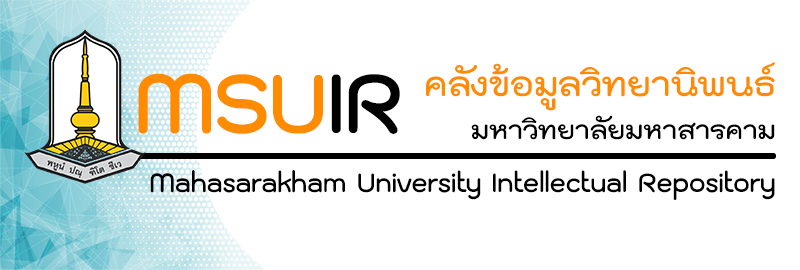Please use this identifier to cite or link to this item:
http://202.28.34.124/dspace/handle123456789/2743Full metadata record
| DC Field | Value | Language |
|---|---|---|
| dc.contributor | Yingying Shen | en |
| dc.contributor | Yingying Shen | th |
| dc.contributor.advisor | Vuthipong Roadkasamsri | en |
| dc.contributor.advisor | วุฒิพงษ์ โรจน์เขษมศรี | th |
| dc.contributor.other | Mahasarakham University | en |
| dc.date.accessioned | 2025-05-07T11:29:52Z | - |
| dc.date.available | 2025-05-07T11:29:52Z | - |
| dc.date.created | 2025 | |
| dc.date.issued | 5/1/2025 | |
| dc.identifier.uri | http://202.28.34.124/dspace/handle123456789/2743 | - |
| dc.description.abstract | The study investigates the enduring cultural and social roles of Ding bronzes within Chinese heritage across historical and modern contexts. Originally used as ceremonial objects during the Shang and Zhou dynasties, these artifacts have transitioned into symbols of cultural identity and pride in contemporary society. This research reflects on their production techniques, social implications, and integration into modern design and economic spheres. By examining how Ding bronzes have been adapted in modern practices while maintaining their traditional essence, the study highlights the complexities of preserving intangible cultural heritage in a globalized world.The study employs a qualitative research methodology, utilizing a combination of historical analysis and case study approaches.Data was gathered through a comprehensive review of existing literature on the historical significance of Ding bronzes and their role in traditional Chinese society. Contemporary case studies highlighting current uses and the commercialization of Ding bronzes were also examined. Additional data were sourced from interviews with artisans and cultural heritage professionals.Findings indicate that Ding bronzes continue to serve as a conduit for cultural continuity, linking past traditions with present national identity and pride. Modern adaptations have seen Ding bronzes being incorporated into the tourism sector as well as in international cultural exchanges. However, challenges persist in maintaining the authenticity of these artifacts amidst commercial pressures. | en |
| dc.description.abstract | - | th |
| dc.language.iso | en | |
| dc.publisher | Mahasarakham University | |
| dc.rights | Mahasarakham University | |
| dc.subject | Ding bronzes | en |
| dc.subject | Cultural heritage | en |
| dc.subject | Preservation | en |
| dc.subject | Traditional craftsmanship | en |
| dc.subject | Modernization | en |
| dc.subject.classification | Arts and Humanities | en |
| dc.subject.classification | Agriculture,forestry and fishing | en |
| dc.title | Ding:Folklore and Social Processes under the Dissemination and Conservation of Cultural Heritage | en |
| dc.title | Ding:Folklore and Social Processes under the Dissemination and Conservation of Cultural Heritage | th |
| dc.type | Thesis | en |
| dc.type | วิทยานิพนธ์ | th |
| dc.contributor.coadvisor | Vuthipong Roadkasamsri | en |
| dc.contributor.coadvisor | วุฒิพงษ์ โรจน์เขษมศรี | th |
| dc.contributor.emailadvisor | vuthipong.r@msu.ac.th | |
| dc.contributor.emailcoadvisor | vuthipong.r@msu.ac.th | |
| dc.description.degreename | Doctor of Philosophy (Ph.D.) | en |
| dc.description.degreename | ปรัชญาดุษฎีบัณฑิต (ปร.ด.) | th |
| dc.description.degreelevel | Doctoral Degree | en |
| dc.description.degreelevel | ปริญญาเอก | th |
| dc.description.degreediscipline | สำนักงานเลขา | en |
| dc.description.degreediscipline | สำนักงานเลขา | th |
| Appears in Collections: | Faculty of Fine - Applied Arts and Cultural Science | |
Files in This Item:
| File | Description | Size | Format | |
|---|---|---|---|---|
| 64012465031.pdf | 10.71 MB | Adobe PDF | View/Open |
Items in DSpace are protected by copyright, with all rights reserved, unless otherwise indicated.

